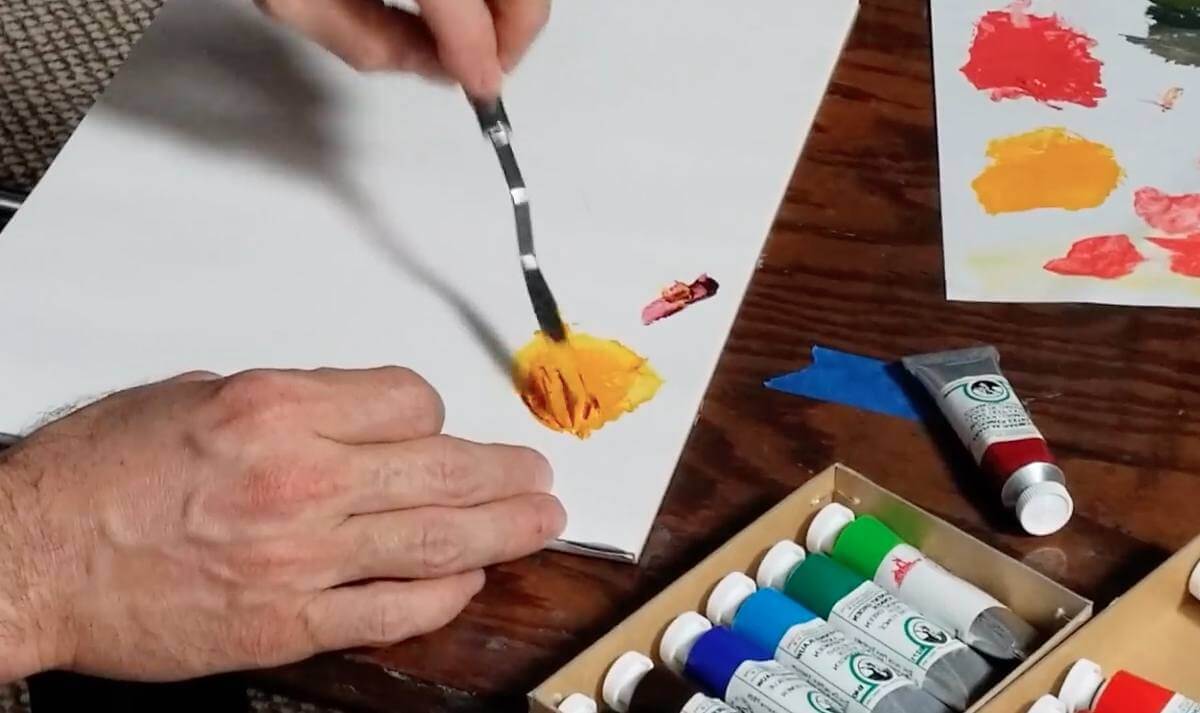
In order to mix paint correctly, there are several important things to keep in mind.
As painters, paint mixing is one of the most important parts of any piece of art. The ability to properly mix paint and produce the correct hue, value, and saturation that the painting needs is a critical tool.
Failing to make proper color mixtures in oil paint can lead to value issues and unrealistic paintings. Understanding how to lighten, darken, and make colors more vivid can be the difference between a strong painting and one that falls flat.
Find out how you mix paint colors using these simple tips!

Value, hue, and saturation are all important parts of color paint mixing.
Mixing Mid-Tones Properly
Learning how to mix paint colors can be overwhelming. That is why at Evolve, students begin their journey into paint mixing (after value and edge) in Block 3 , as they learn about color. Using the beautiful Old Holland paints, students start by simply mixing a mid-tone color for each of the color lights in their painting.
In order to mix the proper mid-tone light for each color, students experiment with small batches of paint, until they find the right mixture. In the beginning, this experimentation is necessary to learn how each paint color reacts. Some colors are richly pigmented, like English red, and can completely take over a mixture. Others may need more amounts to be added in order to make any difference.
Students are urged to isolate the color they are trying to mix in their photograph or in their still life box, so they can understand what it really is. They then need to consider the hue, saturation, and value of the color that they see.
Learn how to organize your palette with this blog: Organizing Your Oil Painting Palette Setup.
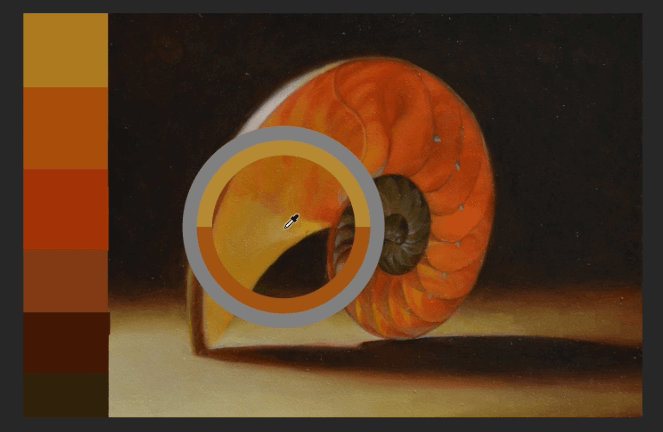
Using photoshop or a similar color isolating tool is a good way to start to understand the colors you see in photographs.
Hue is simply the color itself, for example, red, green, or perhaps blue. Saturation is how rich, strong, or vivid a color appears. The more colorful a mixture, the more saturated it will be, and less saturation will yield a color that appears grayer.
Value speaks to how light or dark that color is. In the beginning, students only mix colors for their lights and add black to make shadows, keeping it simple. But as they improve, they will mix color shadows just like lights. This is where value comes into play, with students carefully considering the value of the light in order to differentiate between light and shadow.
Once a student understands how to mix those mid-tone colors, they can begin to experiment with lightening and darkening color values to adjust the hue, value, and saturation.
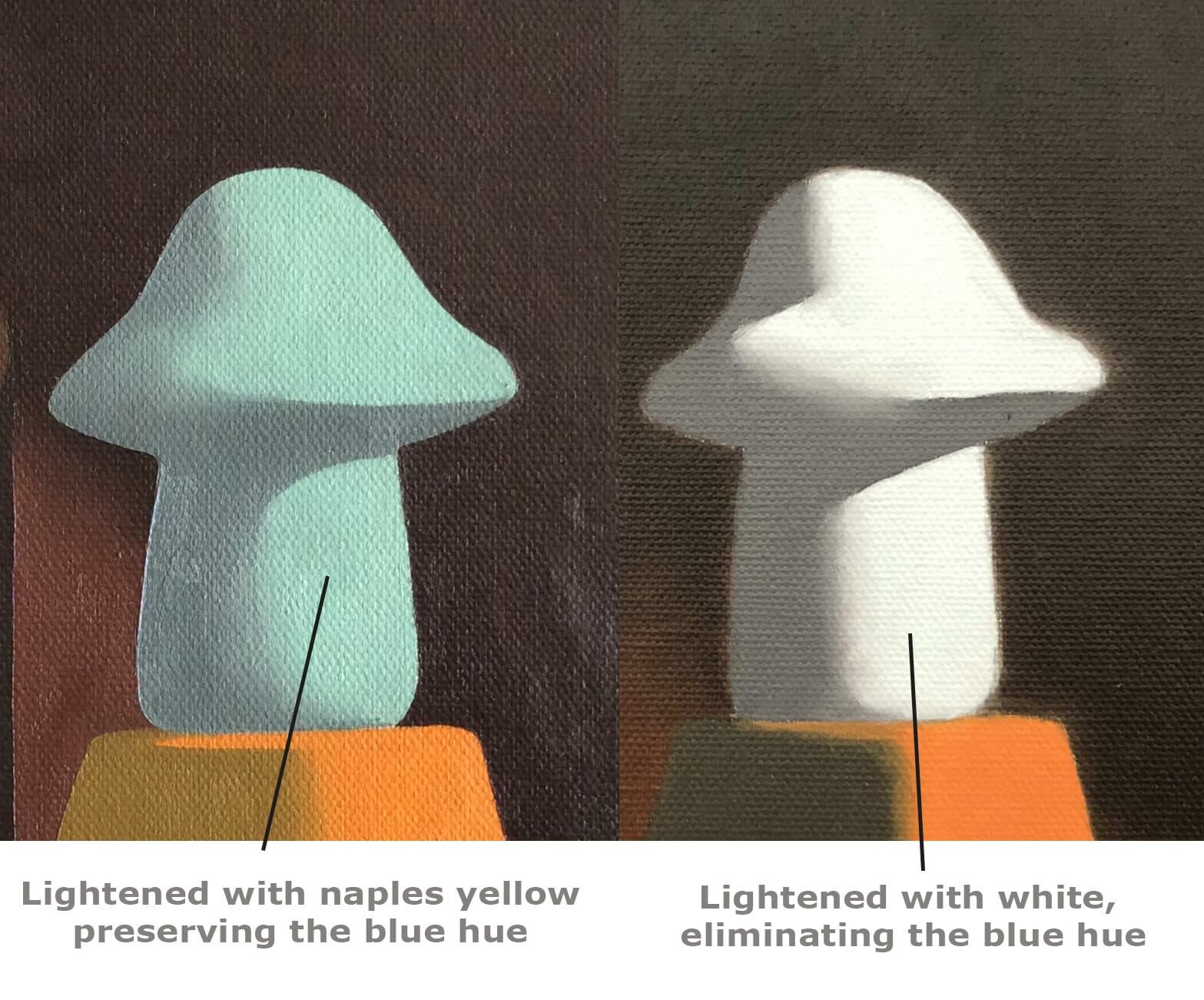
White is not always the right paint choice for lightening color paint mixtures.
Lightening Paint with Color
Most beginner artists will dip immediately into white paint to lighten their paint mixtures. However, white paint doesn’t always lighten colors the best way possible. White paint has a tendency to de-saturate colors, and while they seem lighter, they will look much less colorful.
Choosing a color like Naples yellow or Scheveningen yellow to lighten a paint mixture will yield a more colorful result.
In the photo above, you can see the difference that white and Naples yellow have on a color mixture. In order to keep your paint mixtures well saturated and colorful, reach for a yellow, rather than white paint.
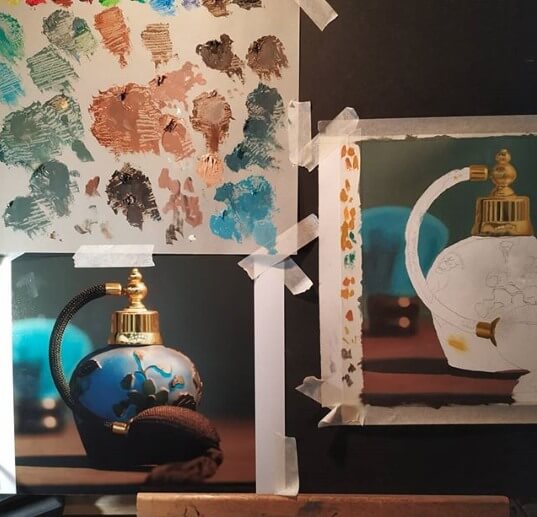
Though it can be helpful while you learn, adding pure black isn’t always the right choice to darken your shadow mixtures.
Shadows Need Color Too
Similar to lightening a paint mixture, there are common mistakes that painters make when making their color mixtures darker in value. Generally, students will reach for pure black to make a color darker. While this is totally acceptable while students are learning, when they have become comfortable with color they then should begin to experiment with mixing shadow values in the same way as color light values. Evolve students learn this technique at the end of block 4.
In order to make a color value darker, whether light or a shadow, most professional painters reach for an earth tone or other naturally dark colors. Burnt umber, ultramarine blue, greens, or some reds can help to darken a painting beautifully.
Pure black has the same downfall as white, as it tends to remove the colorful saturation from a color paint mixture. A combination of burnt umber and ultramarine blue will have nearly the same effect as pure black, but maintains the saturation of a color mixture much more.
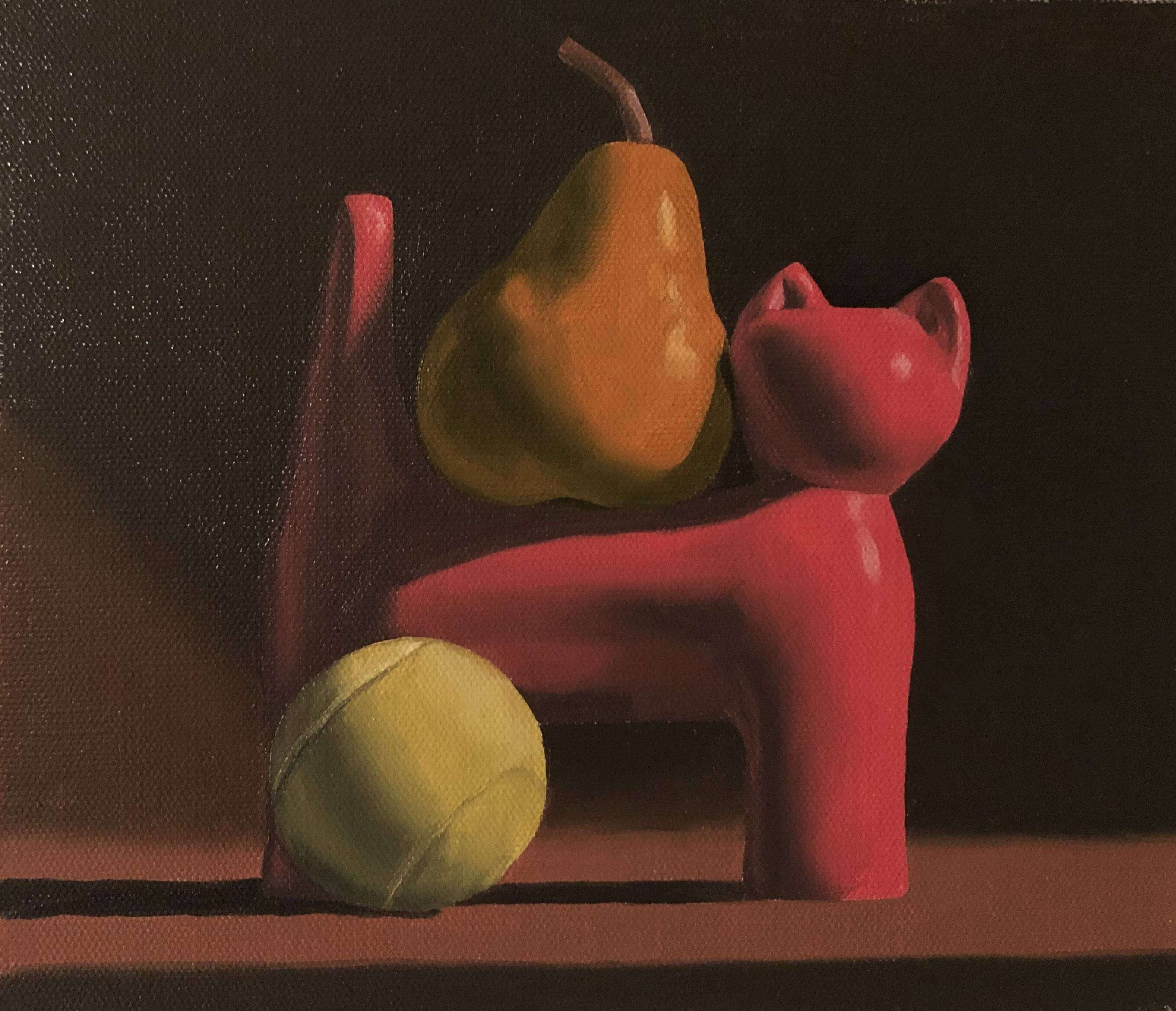
A beautiful example of the moving parts of an oil painting by Evolve student Sheila J.
Color Mixing Example
For the painting above, here are the paint combinations that may be used to mix the colors properly (At the point of this painting in the program, Evolve students would be making their shadow simply by adding black).
Cat: The cat is a warm pink, which can easily become desaturated if lightening completely with white. A mixture of Naples yellow, with equal parts Scheveningen yellow and Scheveningen red, will get the cat’s lights into the ballpark. Add just a touch of English red, and simply a dot will bring some warmth into the mixture. Because English red is so pigmented, it will overpower any color mixture if the artist is not careful. To lighten the mixture, additional Naples yellow will keep the warm pink color, and if additional light is needed, just a touch of white.
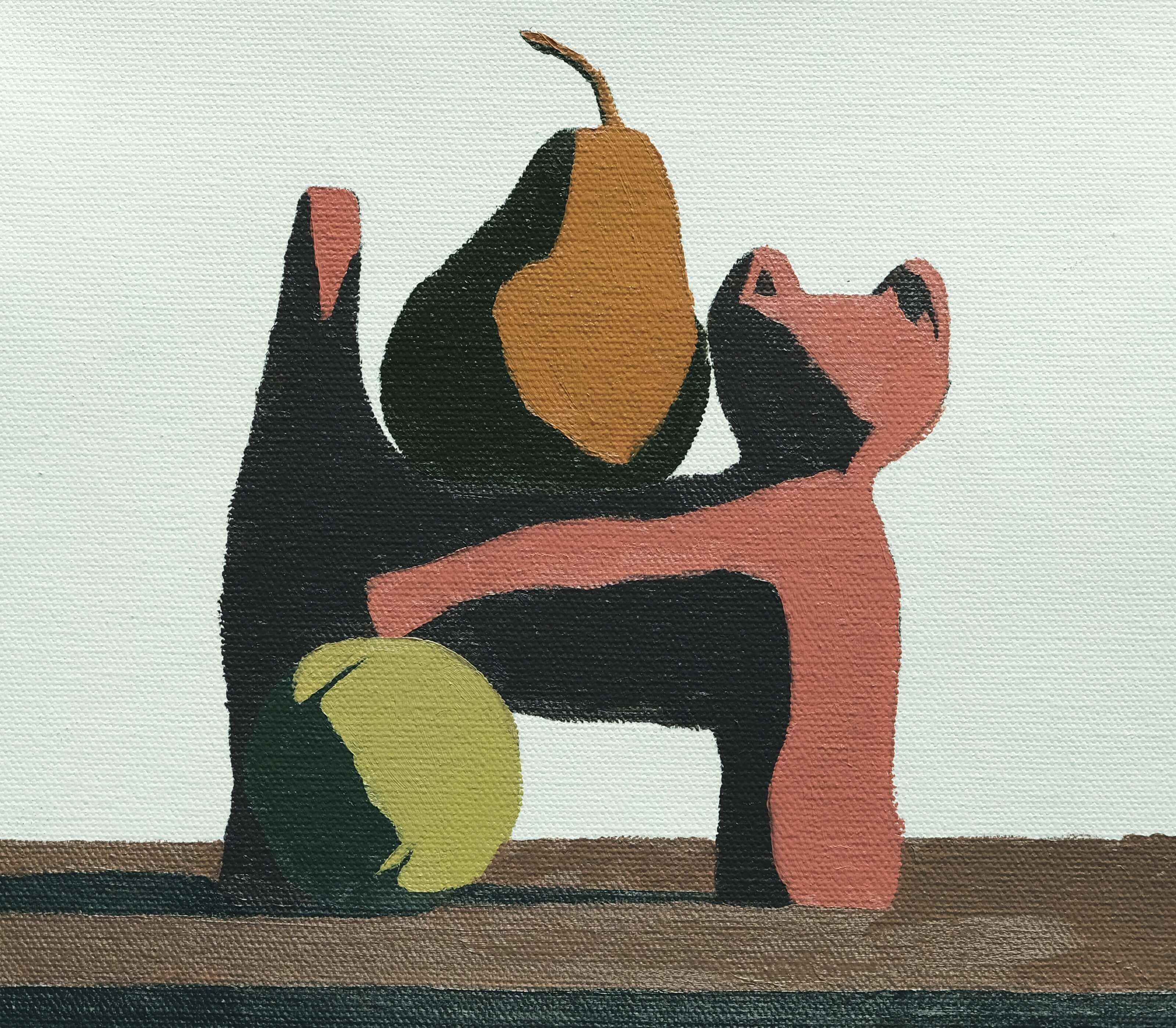
Color added in, along with shadows. The next step is gradients, reflections, and highlights.
Pear: The pear is also a warm orange color, so too much white will desaturate and cool down the paint mixture. Combining equal parts Scheveningen yellow and Naples yellow with just a bit of English red should bring the pear to where it needs to be. Highlights can be created by adding both naples yellow and white to the color mixture.
Tennis Ball: The tennis ball is a tricky color to mix. While it looks slightly green, too much Scheveningen yellow and green will create an unrealistic neon color. Mixing yellow-green with Naples yellow will get you close, but again just a minuscule amount of English red will bring an earthy tone to the mixture, preventing it from getting too oversaturated.
Final Thoughts on How to Mix Paint Colors
Paint mixing can be a challenge, but with practice and repetition, you’ll start to understand the different characteristics of each color, and how they interact with each other. By careful practice and paying attention to the combinations of colors, you’ll begin to make the perfect color mixture and the daunting past of learning how to mix paint colors will become easy!
Want to learn more about oil painting? Check out this post about a few oil painting techniques you should know!
FREE MASTERCLASS:The 4 Part Framework to Develop Artistic Excellence in 12 Months
